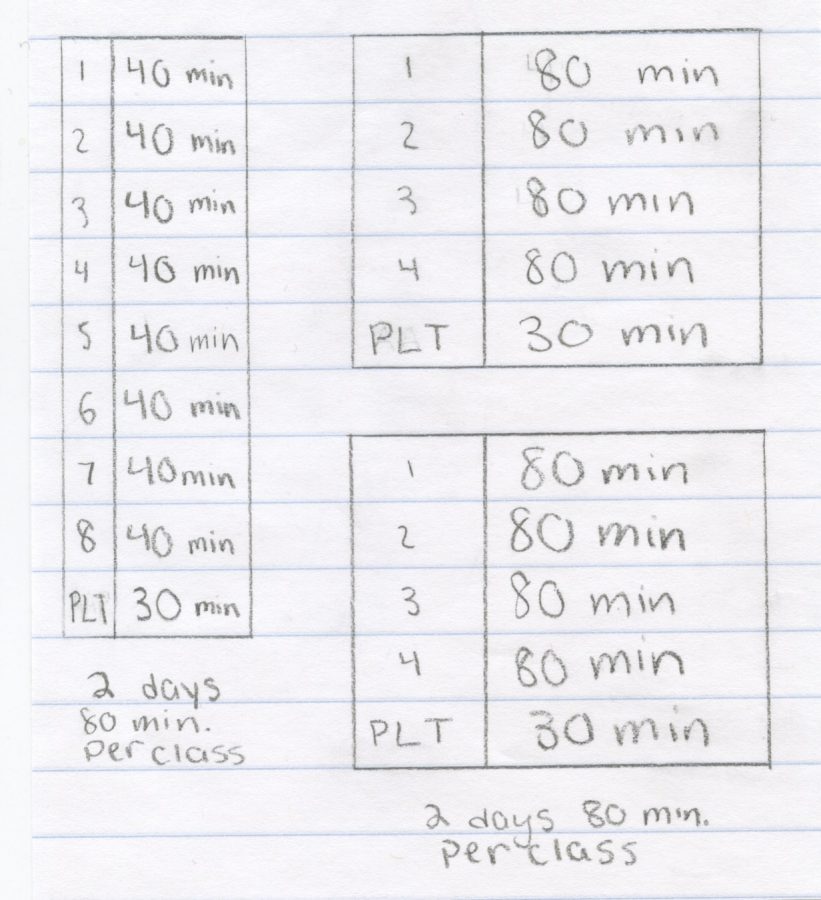On the block
Freedom continues block schedules as it benefits students
Imagine a middle school student weaving through their eight-period schedule everyday comfortably. Now imagine that the same student came up to the high school being confused as to how anyone functions with class periods that are 80 minutes long.
Most transitioning middle schoolers understand this struggle every year, but as a student who has been in the high school for more than a year, most kids have since forgotten about the schedule they used to live by. Students may and can be worried at first, but they will soon learn that block scheduling is beneficial.
“Although the freshmen struggle during the first few weeks of school to get used to a block schedule, most of them end up loving it,” freshman teacher Andrea Niedbala said, “Therefore, I feel like they would not like if we returned to an eight-period day. I think they would feel like class was rushed, they didn’t have enough focused learning time, there were too many different subjects to study within one day and there would be less time to complete homework.”
The extra time also allows teachers to have more time to plan their lessons, make copies and more. Rather than having one 40-minute time a day for teachers to have personal time, they have 80 minutes.
Aside from extra learning time, block scheduling also allows students to have an extra night to complete homework or study for an upcoming test.
“Block scheduling teaches me how to prioritize and balance my schedule so that I am able to give the same amount of effort to each class I attend. Without a day in between classes, there is no way I could successfully balance eight courses with a steady course load,” senior Kitt Jordan said.
Students, however, are not the only that think block scheduling is beneficial.
“I like block scheduling because I feel like it gives me a better opportunity to go deeper into the details of a concept,” Niedbala said, “When we had 40-minute class periods, I felt like I would just get into the topic when it was time for class to be over. By the time I saw those students again the next day, the momentum was gone and I had to waste time reviewing what we had already talked about in the previous class period.”
“Block scheduling allows students and teachers to explore their subject in greater depth. It also allows for more project or laboratory based work that wouldn’t be possible in a traditional schedule,” principal William Deal said, “I’ve also received feedback from graduates that they felt the block more adequately prepared them for what college courses look like.”
In colleges, schedules are most similarly related to block scheduling. An average college student has one or more 80-minute classes a day and also have classes lasting the same time on other days. When a student transitions from high school to college, it is easier on them as a student if they go from block scheduling to block scheduling, rather than eight periods to block scheduling.



